The finances of small business owners’ companies and personal lives are usually intertwined.
This requires community banks to examine global cash flow when analyzing small business loan applications, especially for S corporations and LLCs. Global cash flow integrates both business and personal cash flow to provide a more complete picture of the business owner’s overall financial situation.
The challenge for bankers is determining the amount of money to allocate for the owner’s personal expenses when underwriting a business loan using global cash flow. There are three common approaches:
1. The easiest approach is to determine the total amount of global cash flow (personal and business) after debt service and assign whatever is left over to the personal expenses. If this approach is used, make sure the amount that’s left over realistically matches with the owner’s lifestyle.
For example, it would be insufficient to underwrite a loan to a 1.25 debt service coverage ratio if this only leaves $5,000 a year for the owner and their family to live on.
2. The percentage method is another common approach. You simply allocate a percentage of personal cash flow (after taxes and before debt service) to personal living expenses — 15-25 percent is common.
The percentage should be adjusted based on the banker’s knowledge of the customer’s lifestyle. If they like to travel regularly, allocate a higher percentage. With this approach, establish both a minimum and a maximum that will be allocated for the owner’s personal expenses.
3. The third approach is to allocate a fixed amount of money based on the number of family members. For example, you could allocate $25,000 for joint borrowers and $5,000 per additional dependent a year to personal living expenses.
Please contact us if you have any questions 417-881-0145.

